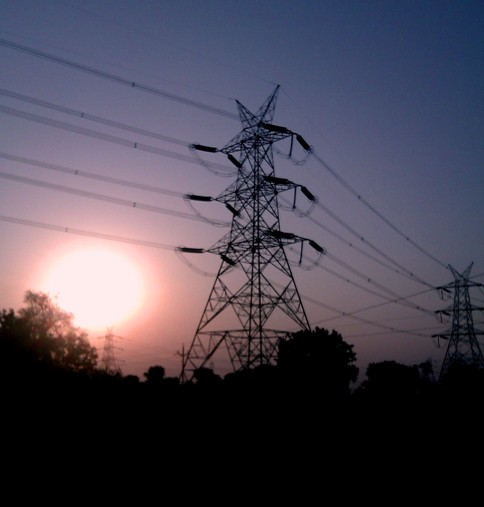Renewable Electricity Sector Poised to Take Lead in India
India’s economy is rapidly growing with an ever-increasing demand for electricity. Renewable energy is the new and rapidly advancing field and is likely to support the growing electricity requirement of the country. With the depleting sources of conventional energy such as coal and increasing levels of pollution associated with the power generation by burning fossils fuels, Government of India (GOI) is also taking further steps to curtail fossil fuel based power generation and supporting renewable energy sector going forward. This is evident from GOI’s commitment to reduce Greenhouse gas (GHG) emissions intensity of its GDP by 33-35% by 2030 from the 2005 level and aims to achieve about 40% cumulative electric power installed capacity from renewable energy sources. GOI has made this communication to United Nations Framework Convention on Climate Change (UNFCCC) in its Nationally Determined Contributions (NDCs).
The power sector is responsible for a major share of GHG emissions. As per rough estimates, a quarter of GHG emissions are from the energy sector. Therefore, national GHG emission reduction strategies include energy efficiency and increasing share of renewable energy as a key component. We need 42% of electricity generated from renewable energy sources by 2030 and 52% by 2050 to stay within a 2-degree Celsius average global warming threshold based on the estimates of the International Energy Agency (IEA).
The Indian power sector is driven by state, central and private players. As per CEA data, the total installed capacity in the country is 331 GW as on 31st Oct 2017. Coal still contribute heavily to India’s total electricity mix with total installed capacity of 193 GW (58%). The share of renewable electricity is growing significantly with 60 GW (18%) of installed capacity in October 2017. Total grid-connected renewable electricity capacity has grown at Compound Annual Growth Rate (CAGR) of 16% over the period of last five years. Interestingly, we have seen only 8% growth in coal-based installations within the same period.

Wind power is a dominant source of renewable energy and has received an overwhelming response in the presence of accelerated depreciation benefits (tax benefits) in the past. Currently, Solar has become a preferred choice with the simple modular technology and falling cost of solar panels globally. The solar sector is expected to perform well with GOI’s big push via National Solar Mission and 100 GW of targets to be achievable by 2022 (Total RE target: 175 GW). By Oct 2017, a cumulative solar capacity stands at about 15 GW against about 7 GW in March 2016.

GOI introduced various supportive policies to boost RE sector in India. Some of these policies are National Solar Mission, Feed-in-Tariff, Accelerated Depreciation (AD), Generation Based Incentives (GBI), Renewable Purchase Obligations (RPO) and Renewable Energy Certificates (RECs) have helped in the rapid growth of Renewable Energy deployment in the country. The EY Renewable Energy Market Attractiveness Index (REMAI) ranks India as the 2nd most attractive market overall. India was at a third position in the REMAI in the previous year.
Also, GOI is at the forefront in the formation of International Solar Alliance (ISA) which is the first international and inter-governmental organization of 121 Countries to have headquarters in India with United Nations as Strategic Partner. ISA has a stated goal of increasing the use of solar energy in meeting energy needs of prospective ISA member countries.
With falling costs of solar panels in the international market, the cost of generation from solar PV is declining in India. Recently, record low solar and wind power tariffs in latest biddings have sparked the renewable sector in India. Bidders have quoted Rs. 3.46/kWh in the latest auction for wind power, the first of its kind in India and Rs. 2.62/kWh in the auction conducted for the 250 MW Bhadla Solar Park in Rajasthan. Though various agencies have termed the recent low winning bids for solar power projects in India “unsustainable”, it has demonstrated the positive signal towards solar energy from the overall energy market.
Given that over 50% of electricity demand in India comes from businesses, the sector has a crucial role to play in helping to shape the energy sector. The RE100 – a global renewable energy campaign led by The Climate Group in partnership with CDP is focused on increasing corporate demand for renewable power by changing the narrative and making it clear that it is a smart business choice. 113 of the world’s leading companies are now members of RE100. As per RE100 annual report 2017, these companies (87 on that time) have created demand for around 107 Terawatt hours (TWh) of renewable electricity – around the same amount of power consumed by the UAE or The Netherlands. Three Indian companies – Infosys, Tata Motors and Dalmia Cement have joined the RE100 campaign and committed to source 100% of its electricity requirement form renewable energy sources.
Indian corporates have started building climate change into their risk mitigation strategy. As per CDP India Climate Change Report 2017, there is an increasing focus of Indian companies on setting renewable energy targets with 19 companies committed to renewable energy production and consumption targets. Some progressive energy companies like Tata Power has taken a target to significantly increase the ratio of clean and renewable energy in its portfolio. This displays the country’s commitment towards adopting renewable energy.
It is an established fact that India’s growing energy requirements will largely be fulfilled by renewable sources in the coming decades. This makes this sector an exciting space to watch out for both investors and renewable energy developers. The sun is shining brightly in India and will take the country to cleaner sources sooner than later.
Data sources:
http://mnre.gov.in/mission-and-vision-2/achievements/ (Accessed on 10th Nov 2017)
http://www.cea.nic.in/monthlyreports.html (Accessed on 10th Nov 2017)
Read more about-
Top Five States in India with Highest Renewable Energy Capacity
Four Renewable Energy Stocks to buy for 2018


